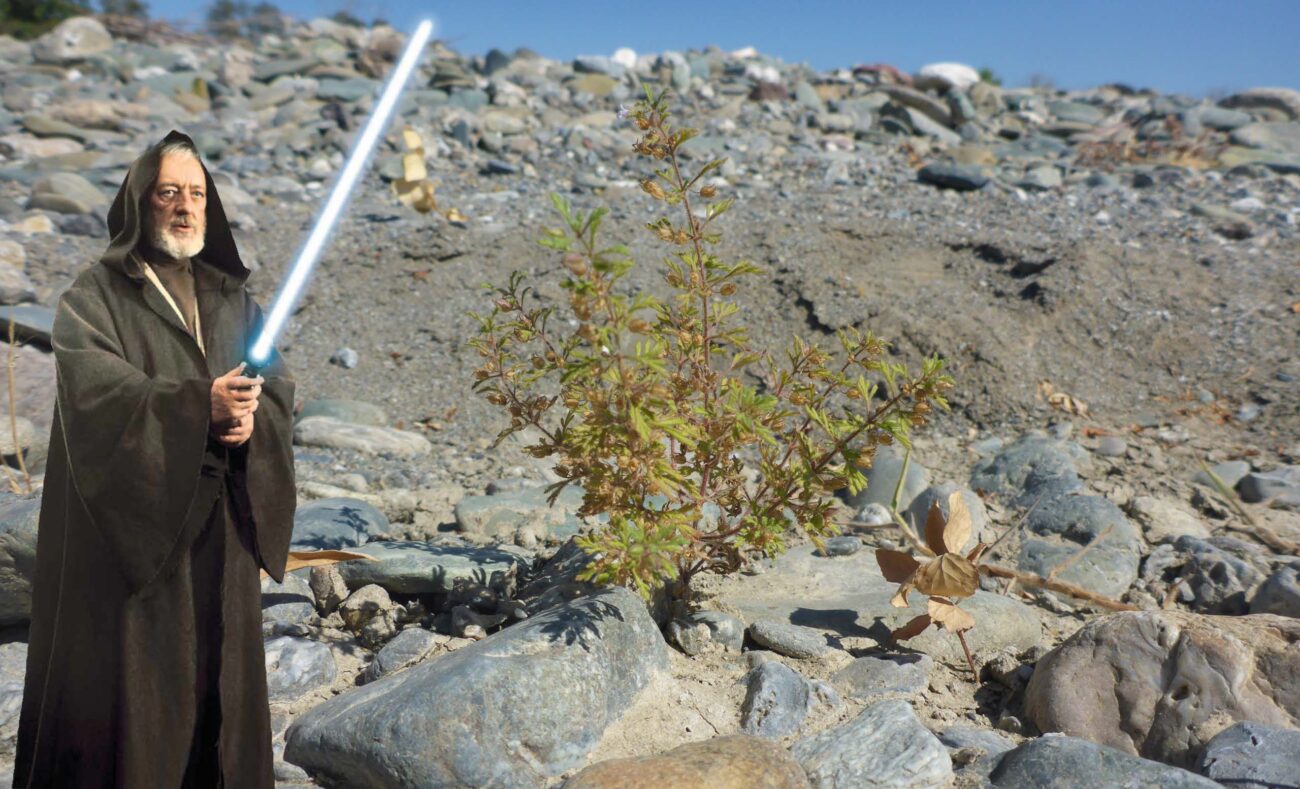
This is not clickbait! This is not FAKE NEWS! Obi-Wan Conobea (in the center of the above photo) has landed in Tehama County and is now occupying the entire length of Thomes Creek, from the Sacramento River to Paskenta! How did this seemingly sedentary alien jump over 1,300 miles from its known range? And how did it get that name?
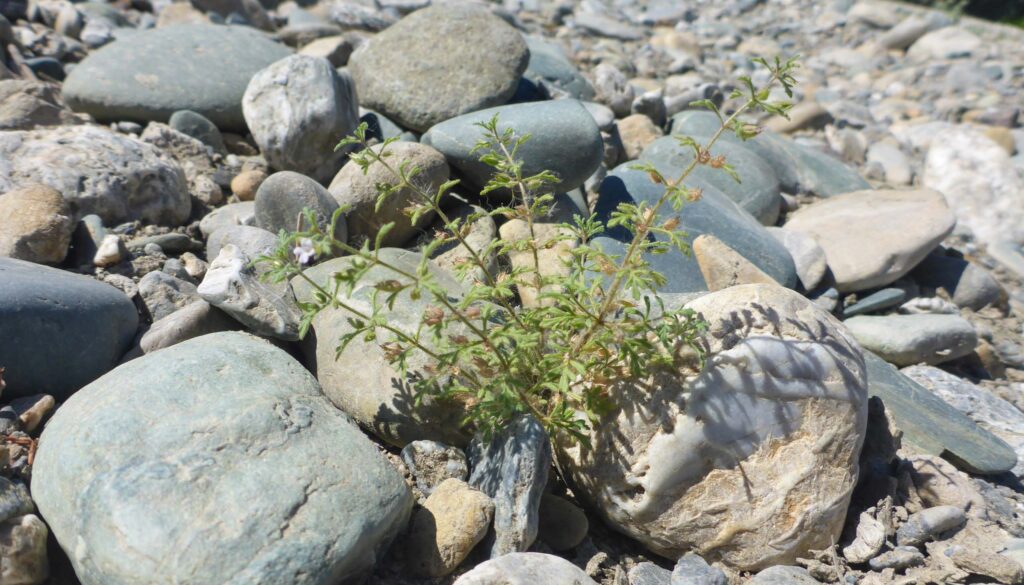
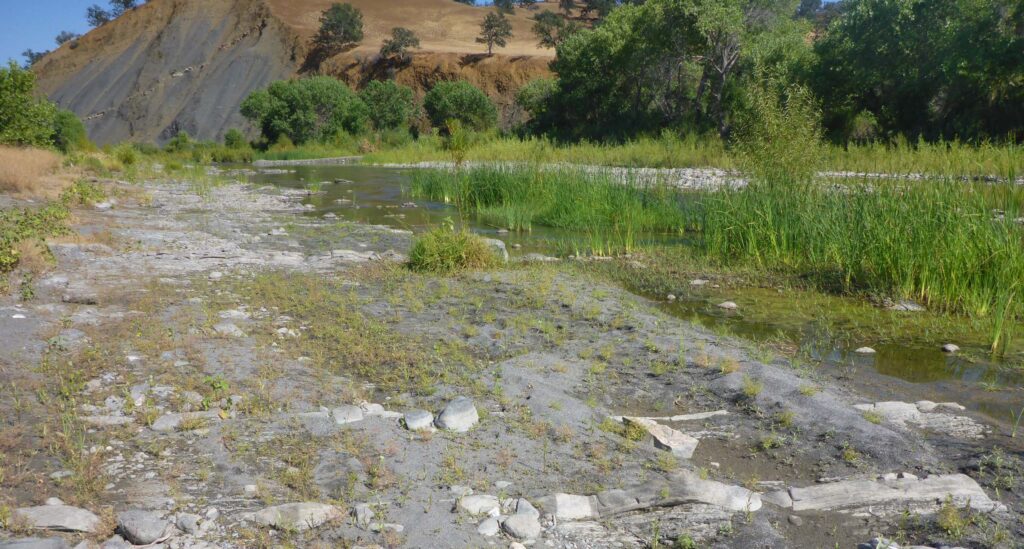
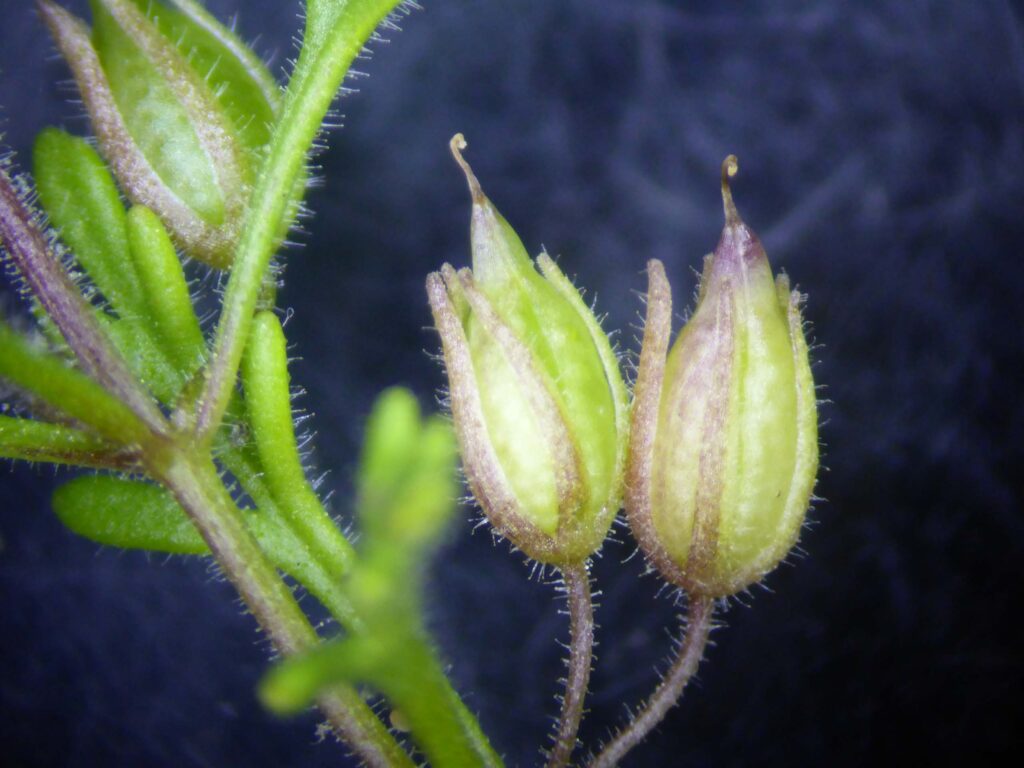
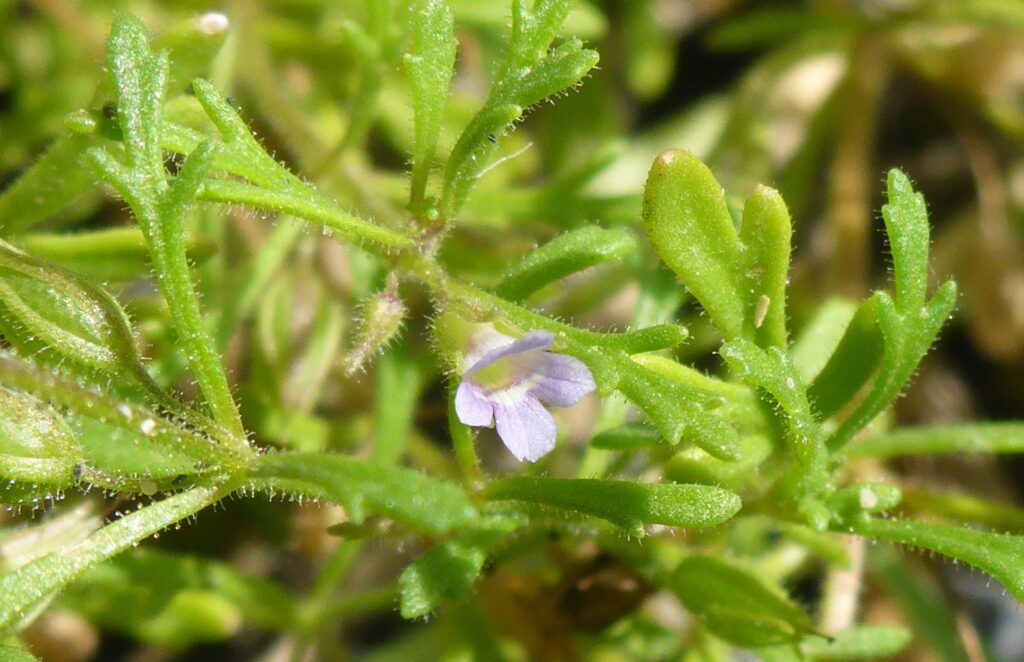
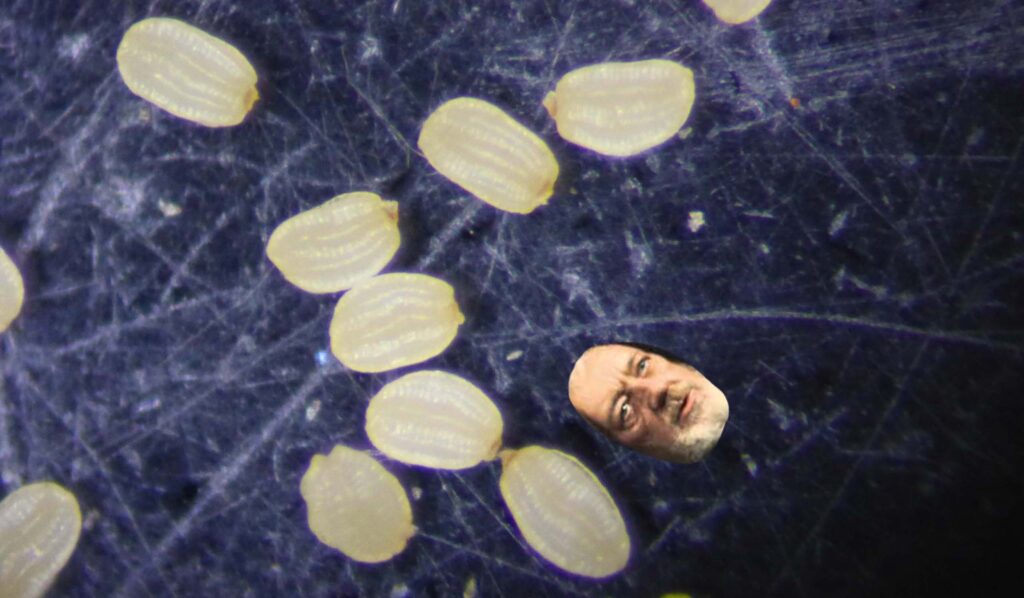
Only those interested in the minutiae may wish to read on . . .
For our September 3 hike, Laurie and I chose the Nomlaki (Thomes Gorge) Trail. It is a trail we have hiked on a number of occasions, but never in September. Although we almost always find something unexpected, there wasn’t much in bloom, so we spent more time hiking than botanizing, and finished early. Since we had plenty of daylight left, we decided to stop by a lower reach of Thomes Creek, just downstream of Paskenta, hoping to find a few late-season bloomers. After wading through the star-thistle, we reached the creek’s edge and found it equally dismal – almost nothing in bloom.
However, we did find an abundance of a small annual plant that we didn’t recognize. It was mostly in fruit, but still had a few tiny pale-blue flowers. We nabbed a couple plants and then headed on home. With ample magnification from a dissecting scope, a copy of the 2022 edition of Vern Oswald’s Selected Plants of Northern California and Adjacent Nevada, and the CalFlora search page at my fingertips, I thought we’d have a name in no time. But no luck. So it was on to The Jepson Manual – which dead-ended in Stemodia, a desert perennial. But the flowers looked similar, so I thought I’d check the Flora of North America to see if there were any annuals in the genus. Nothing fit, but the genus description mentioned three closely related genera. After wheeling through the dichotomous key, I arrived at Leucospora, which has only one species, L. multifida. A perfect fit – except the nearest known population is over 1,300 miles away!
I returned to the site the following day, took some photographs, collected some specimens for the plant press, and walked about a mile downstream, consistently finding Leucospora on gravel bars and in moist sand accumulations. At this point, we needed an expert to weigh in . . . Upon checking several scientific papers regarding the species and its close relatives, a name I recognized as a California botanist kept coming up – Dr. David Keil of Cal Poly San Luis Obispo. I emailed Dr. Keil on Monday night and got a response on Tuesday morning. Definitely Leucospora multifida! A newly naturalized species and genus for California . . .
And now all is done except for the hard work. Dr. Keil happens to be the Noteworthy Collections editor for the California Botanical Society’s journal, Madroño, so we will prepare a short paper for publication in the journal; and specimens need to be circulated to the Hoover Herbarium in San Luis Obispo, to UC Berkeley, and to the Ahart Herbarium at CSU Chico. And we’ll post some photos on Calflora, of course! ~Don Burk
